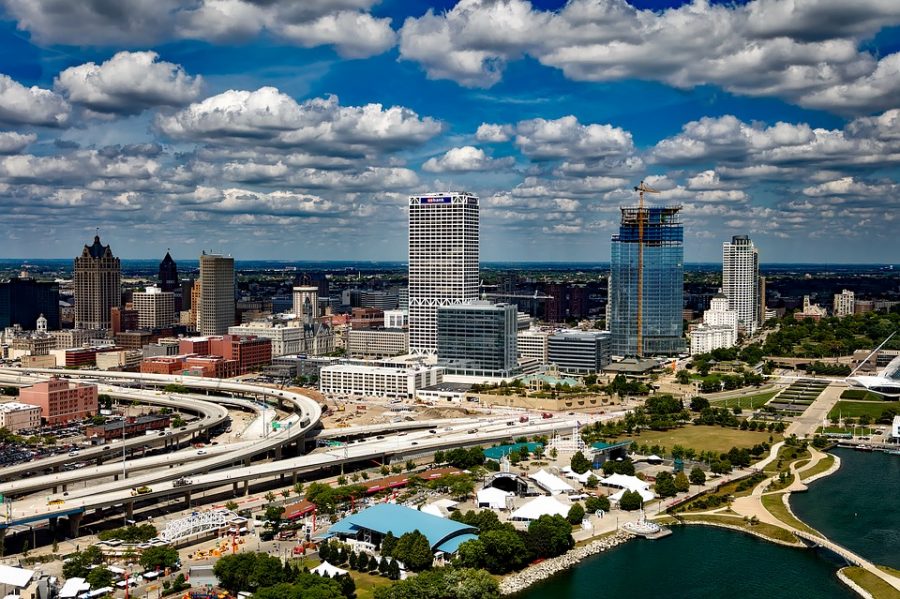Don’t move back in with mom and dad upon graduation, seniors — stay in Milwaukee and take advantage of its low cost of living.
The cost of living in Milwaukee is lower than the national average, according to Sperling’s Best Places, a website that analyzes and compiles data about the living conditions of cities across the U.S. The overall cost of living in Milwaukee, as of September 2011, was an 89 on a scale based on the U.S. average of 100.
This means Milwaukee is less expensive than average, according to the site, which gathers its data from the U.S. Census Bureau, the National Center for Education Statistics, the U.S. Bureau of Labor Statistics and other governmental and private organizations.
Jessica Quintanilla, the membership and events manager at Fuel Milwaukee, an economic development initiative of the Metropolitan Milwaukee Association of Commerce, works to put the Milwaukee region on the map. Quintanilla is originally from Milwaukee and chose to move back after graduating from college in Minnesota.
“Milwaukee is a small enough community to make a name for yourself but big enough for constant opportunity,” Quintanilla said.
Mike Ruzicka, president of the Greater Milwaukee Association of Realtors, said there is a strong housing market in Milwaukee right now. Ruzicka said there has been an increase in singles buying homes in downtown Milwaukee because of low housing prices.
The median value of owner-occupied housing units in Milwaukee is $165,700, while the median in the United States is $188,400, according to 2012 Census Bureau data. In Chicago, the median value of owner-occupied housing units is $269,200.
“We are expecting to see an increase with 20-somethings as well,” Ruzicka said. He said more single women are purchasing homes than single men.
Jean Stefaniak, a residential real estate broker who specializes in downtown Milwaukee, said it is cheaper to buy than rent in downtown Milwaukee right now. Stefaniak has been a realtor in Milwaukee for 17 years.
She said a low-interest mortgage on a $150,000 condominium downtown would be about $1,200 a month, while rent for a similar one-bedroom apartment would be about $1,500 a month plus utilities, parking and other costs.
“The overall cost of living (in Milwaukee) compared to what you can make is tremendous,” Stefaniak said.
Quintanilla said recent reports from ManpowerGroup, which creates and delivers workforce solutions to businesses, are incredibly optimistic. Further, in 2012 Milwaukee was ranked the fifth-best city for finding employment by Forbes magazine. She said young professionals in Milwaukee are doing better than other demographics.
“(Milwaukee) is a community with a lot of history and a lot of new growth,” Quintanilla said. She said the healthcare industry in Milwaukee is booming with many large companies.
“If you’re bored in Milwaukee then you are doing something wrong,” she said.
Quintanilla said Milwaukee has a very vibrant young population. Now approaching age 30, Qunitanilla also said she is glad she moved back to the Brew City.
“(Milwaukee) had what I needed to become what I wanted to be,” Quintanilla said.
Matt Larson, a 2011 graduate of the College of Communication, lives on the lower east side of Milwaukee and works at Serve Marketing in the Third Ward. Larson said it was easy to decide to stay in Milwaukee because he already had a job there upond graduation.
Larson said he has been able to get out of the “Marquette bubble” since moving off campus.
“Milwaukee has a bright future that I didn’t see while at Marquette,” he said. He said he has enjoyed exploring the art, music, bars and people of Milwaukee off campus.
“I’ve been experiencing the city in a different way than while at Marquette,” Larson said.
Larson said moving to Milwaukee full-time was an easy transition.
“We don’t have big skylines,” Larson said. “But (Milwaukee is) affordable.”




